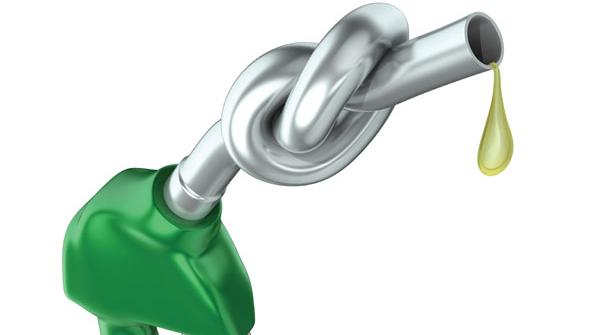Unique government-industry research program aims to improve fuel efficiency
What is in this article?
Lighter vehicle research
Significant change also is expected for light vehicles through the SuperTruck program, as six projects — totaling more than $71 million in grants — are focused on developing engine technologies that will improve the fuel economy of passenger vehicles by 25 percent to 40 percent by 2015 using an engine-only approach. The projects and funding being underwritten by DOE include:
- Chrysler Group received more than $14.4 million to devise a flexible combustion system for its minivan platform based on a downsized, turbocharged engine that uses direct gasoline injection, recirculation of exhaust gases, and flexible intake air control to reduce emissions.
- Cummins received $15 million to develop a fuel-efficient, low emissions diesel engine that achieves a 40 percent fuel economy improvement over conventional gasoline technology and significantly exceeds 2010 EPA emissions requirements.
- Delphi Automotive Systems obtained more than $7.4 million to design a new low-temperature combustion system, coupled with technologies such as continuously variable valve control and engine “down-speeding,” to improve fuel economy by at least 25 percent.
- Ford Motor got $15 million to achieve a 25 percent fuel economy improvement with a gasoline engine in a 2010 mid- to large-size sedan, using technologies including engine downsizing, turbo-charging, direct injection, and a novel exhaust after-treatment system.
If breakthroughs developed by the entire program — for heavy-duty trucks and light vehicles alike — are adopted broadly across the country, they could save more than 100 million gallons of gasoline and diesel per day, and reduce carbon emissions from on-road vehicles by 20 percent by 2030, says Ramin Younessi, Navistar group vice president for product development and strategy.
Near term, however, he believes ongoing work with composite materials and new aluminum components will be more rapidly applied to current truck designs, as well as aerodynamic advances, to help vehicle makers improve fuel economy ahead of the federal mandates.
"The improvements we strive to achieve will not come in leaps for the most part, but will be the sum of many smaller but important measures," says Elmar Boeckenhoff, DTNA's senior vice president for engineering and technology. “Don’t expect a silver bullet, but expect us to hit the target.”
In the end, the cost of the new technology could be the biggest challenge the participants in the SuperTruck project must surmount, says Wayne Eckerle, vice president for research and development at Cummins.
“Our biggest technical challenge is really getting the costs for any and all of the technologies and systems we’re working on down to where the fleets will want to buy them,” he says. “They need to be durable and reliable, of course, but in the end they must offer a way to reduce total cost of ownership in order for the customer to use them.”
Sean Kilcarr is senior editor for Fleet Owner, an American City & County sister publication.
















Fuel Efficiency is a matter
Fuel Efficiency is a matter of concern for every automobile user. Even if the government officials are worried about the situation. We need to check this situation otherwise there would be a day where there would be no fuels. For this the government had launched an initiative to improve the fuel efficiency standards by launching DOE program.
auto body repair portland
I hope this program will
I hope this program will prove to be most effective although I know I should also be realistic and realize that it’s going to be a while until we find the perfect solution. I wonder if they would make that research paper public…
We know that most fuel
We know that most fuel consumption occurs in case of the heavy duty vehicles. It is because of the maximum loaded works and heaviest transportation by the heavy weight trucks and light weight trucks. Because of these are transportation vehicles, the use of fuel is maximum for these vehicles. So these heavy duty vehicles are going to be fuel efficient very soon. If it happens, then it will be very helpful to the service providers and customers. It will be also better for the automobile industry and fuel industry.
When you think about the way
When you think about the way in which the global economy is going in, I think this is a positive development, although I think attentions should be turned to alternate methods of power, such as electricity. Personally I think that’s the future.
Increase in the rate of the
Increase in the rate of the vehicle fuels, automatically increase the travel expenses. Increase in traveling cost making much more problems for the public or passengers. Mostly, the higher percentage of the people belongs to the average families. So increase in travel expenses will make their life difficult. Basically, the people in rural areas suffering the most. In rural areas, the roads are well constructed and the use of fuels much more due to the under constructed roads. So the people have to pay more travel expenses for them. So the fuel price needs to be in control to minimize the travel expenses.
I think it’s a good thing
I think it’s a good thing that they reveal their plans to the public via this article post. It may not show full transparency as what others say but it’s good to know that you let us in on your plans. After all, fuel efficiency is a primary concern of all consumers around the world.
The best way to save money on
The best way to save money on gas is to drive a fuel-efficient car. It’s probably impractical to replace your current car for something that costs less to run, but if you’re in the market for a new vehicle, keep fuel economy in mind. There are many ways we can increase our fuel efficiency like firstly, check your tire pressure at least once a month. Under-inflated tires burn more fuel. Then, Corroded battery cables cause the alternator to work harder, using more gas. Have them cleaned as a matter of course with each engine check-up. Change the air filter at least the set number of times outlined in the owners manual, more if you drive in dusty conditions etc . There are many more ways. Don’t drive your car with dirty or clogged filters, such as the air filter or the oil filter if you don’t want to shell out at the pump. Get them cleaned or replace them.